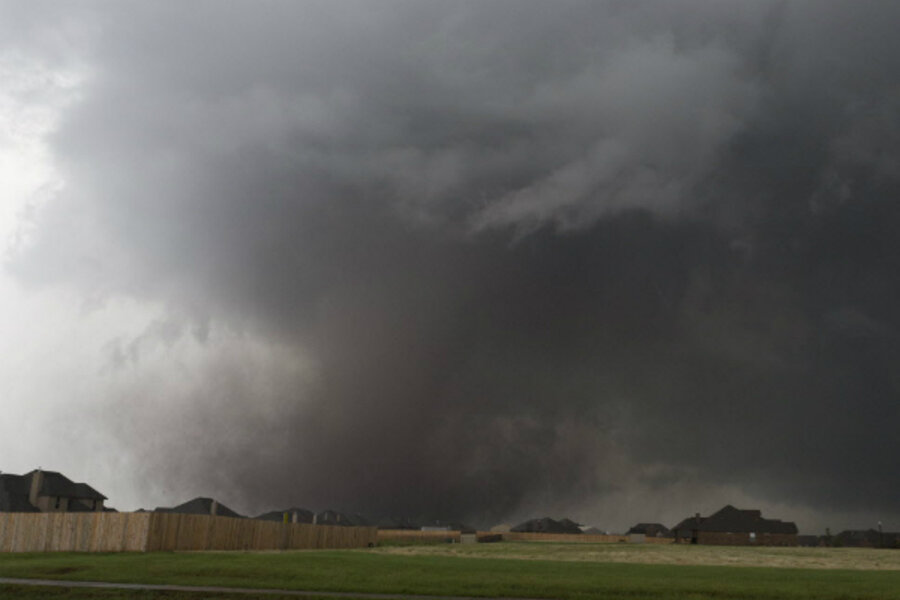Oklahoma tornado was a monster, but it wasn't a record-breaker
The National Weather Service has rated the tornado that struck Moore, Okla., Monday afternoon as an EF5, the highest rating with wind speeds estimated at more than 200 miles an hour.
The event gives Moore the distinction of being the only city in the world to have taken a direct hit from an EF5 twister twice – once in 1999 and again Monday. The new estimate, up from a preliminary estimate of EF4, brings to 59 the number of these chart-topping tornadoes to strike US since 1950, according to data gathered by the National Weather Services Storm Prediction Center (SPC) in Norman, Okla.
The wind strengths are estimates based on the extent of damage inflicted on different types of structures. With the exception of the weakest tornadoes, twisters tend to destroy any wind sensors placed in their paths. Researchers have been able to measure wind speeds higher in the funnel on a few tornadoes through other means. They clocked wind speeds in the twister that hit Moore in 1999 at 302 miles an hour – the fastest wind speeds ever recorded on Earth.
Monday's tornado widened and narrowed along its path, notes Rick Smith, warning coordination meteorologist at the local National Weather Service Forecast office, also in Norman. But it reached its maximum width as it spun across Moore, leaving behind a path of destruction some 1.3 miles wide, he says.
The current record for widest tornado remains an EF4 twister that hit Hallam, Neb., in May 2004. At its most intense, it spanned nearly 2.5 miles.
Oklahoma turns out to be ground zero for tornadoes rated EF4 or EF5, according to the SPC, while Oklahoma City has had some 100 twisters cross its boundaries since 1896, with another 49 counting as near misses.
The tornadoes that have popped up over the past few days belie the relatively benign conditions that have existed throughout much of the past year, researchers say.
While April was the 13th warmest on record globally, it was the 23rd coolest for the continental US and the coolest for the lower 48 since April 1997, according to National Oceanic and Atmospheric Administration.
This contributed to a very slow start to the 2013 tornado season. For the 12 months ending April 30, the US experienced 197 tornadoes rated EF1 or higher, according to data compiled by Harold Brooks, a tornado researcher at the National Severe Storms Laboratory in Norman. That's 50 fewer twisters than the previous record low, which was set from June 1991 to May 1992.
And while severe weather in January and February led to more reports of tornadoes for each month than the 1991-2010 averages would suggest, March and April's tornado reports were well below the 30-year average.
But by mid May, the atmosphere, and severe thunderstorms, began to fire up. For the month through May 21, preliminary data gathered by the SPC indicate some 127 tornado reports around the US, but focused largely on the Plains and Midwest. This compares with 83 reports in April, 18 in March, 46 in February, and 64 in January. The total year to date is running well below the 2005-2011 average total of 718 reports through May 20.





